The island of Borneo offers unparalleled opportunities for wildlife photographers to capture the biodiversity of one of the world’s most celebrated rainforests.
Borneo holds about 6% of the world’s biodiversity on just 1% of the planet’s land, with more than 15,000 plant species, 220 mammal species (including 44 that are endemic), and over 420 bird species.
However, much of Borneo’s biodiversity remains under threat from deforestation and other human activities, making conservation efforts critical.
By building a shot list around the ecological importance of Borneo’s wildlife—especially its orangutans—you can craft a compelling visual story that underscores the connection between animals, ecosystems and local communities.
(function(d,u,ac){var s=d.createElement(‘script’);s.type=’text/javascript’;s.src=’https://a.omappapi.com/app/js/api.min.js’;s.async=true;s.dataset.user=u;s.dataset.campaign=ac;d.getElementsByTagName(‘head’)[0].appendChild(s);})(document,123366,’rryhywfvc3laxapfyaix’);
Here’s a guide to six must-capture images that reveal the soul of Borneo’s rainforest—and the stories of the wildlife that depend on it.
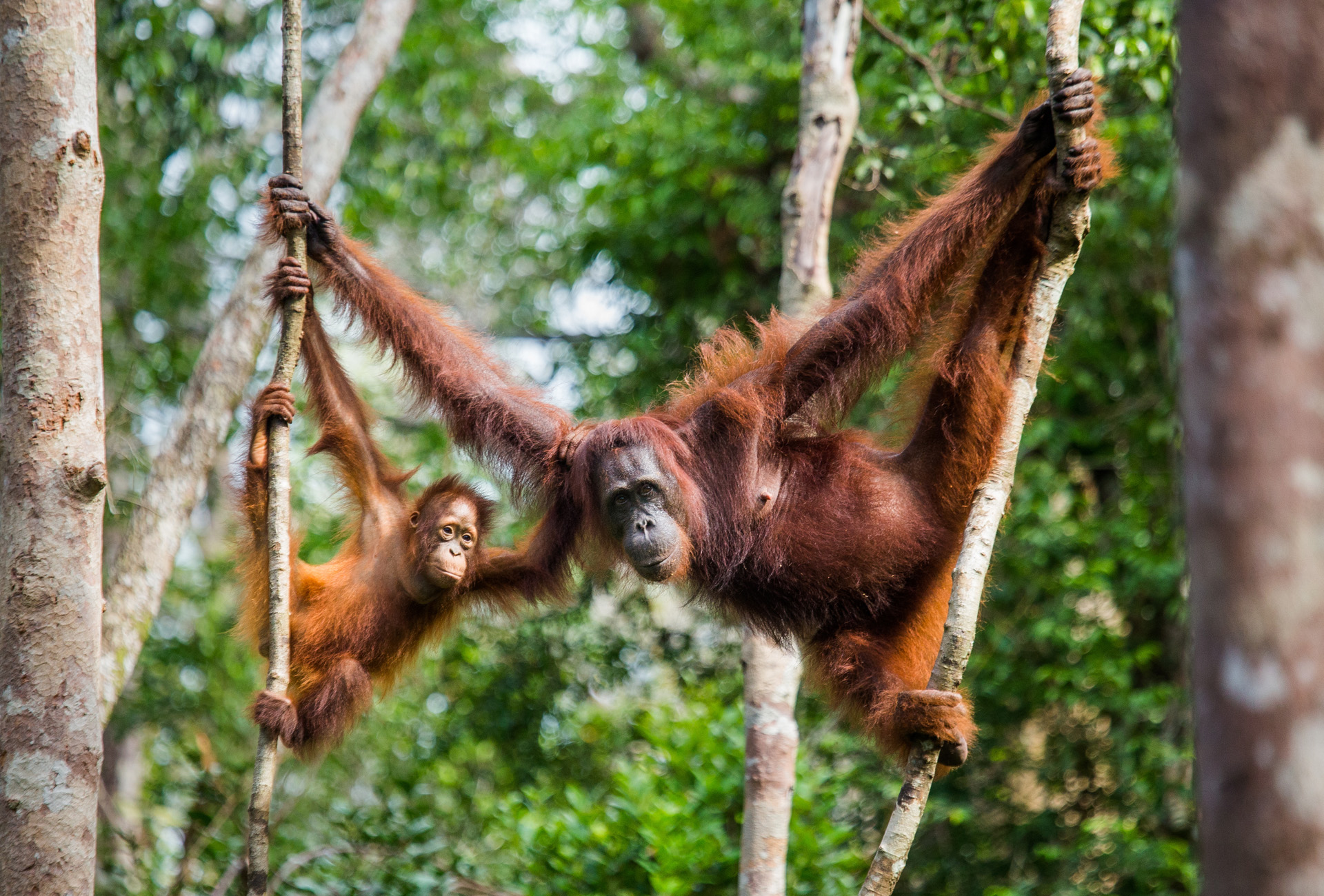
Shot 1: Orangutans in Their Natural Habitat — Wide Shots of the Canopy
Orangutans are the stars of the Borneo rainforest, and capturing them in their natural habitat is crucial.
These wide shots can emphasize the vast, towering trees of the lowland rainforests, particularly in the Sepilok Orangutan Rehabilitation Center, where young orangutans learn survival skills before returning to the wild. In the wide shots, aim to make the orangutans small in comparison to the trees to highlight the scale of their habitat and the ecosystem they inhabit.
These images should give viewers a sense of the orangutan’s environment and their dependence on the canopy. Orangutans rarely descend from the trees, so wide shots showcasing the dense, towering forest canopy with an orangutan nestled among the branches provide critical context for their arboreal lifestyle.
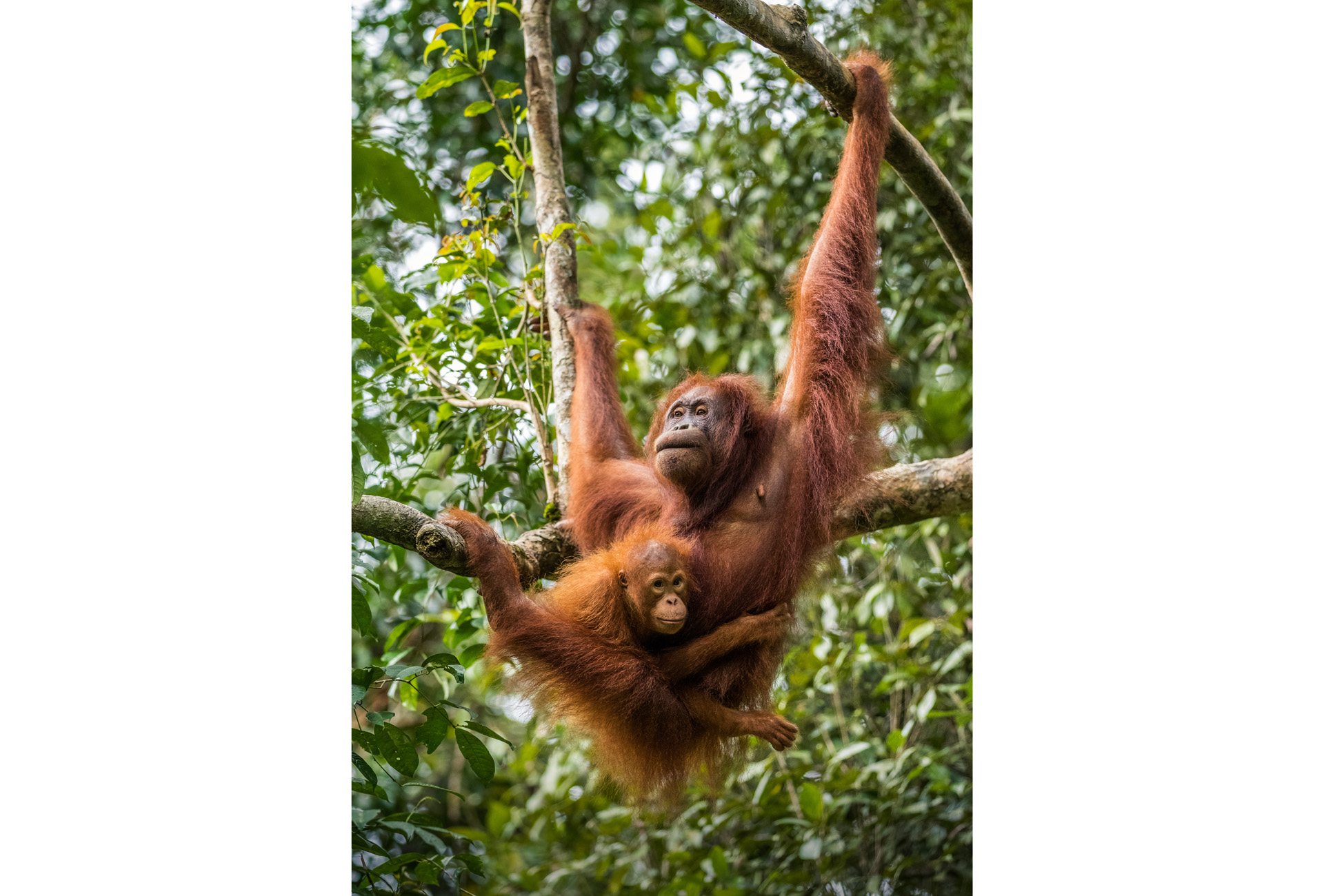
Location: Sepilok Orangutan Rehabilitation Center, Kinabatangan River
Photo Goal: Showcase the orangutan’s environment by using a wide-angle lens to capture the forest canopy. Set your aperture to f/8 or higher to maintain depth of field, ensuring the orangutan and its environment are in focus.
Conservation Connection: Emphasizes the importance of preserving the habitat that orangutans rely on for food, shelter and protection. Orangutans are critically endangered, with habitat loss from deforestation being their biggest threat. By showcasing their natural habitat, you can highlight the urgent need for rainforest conservation efforts.
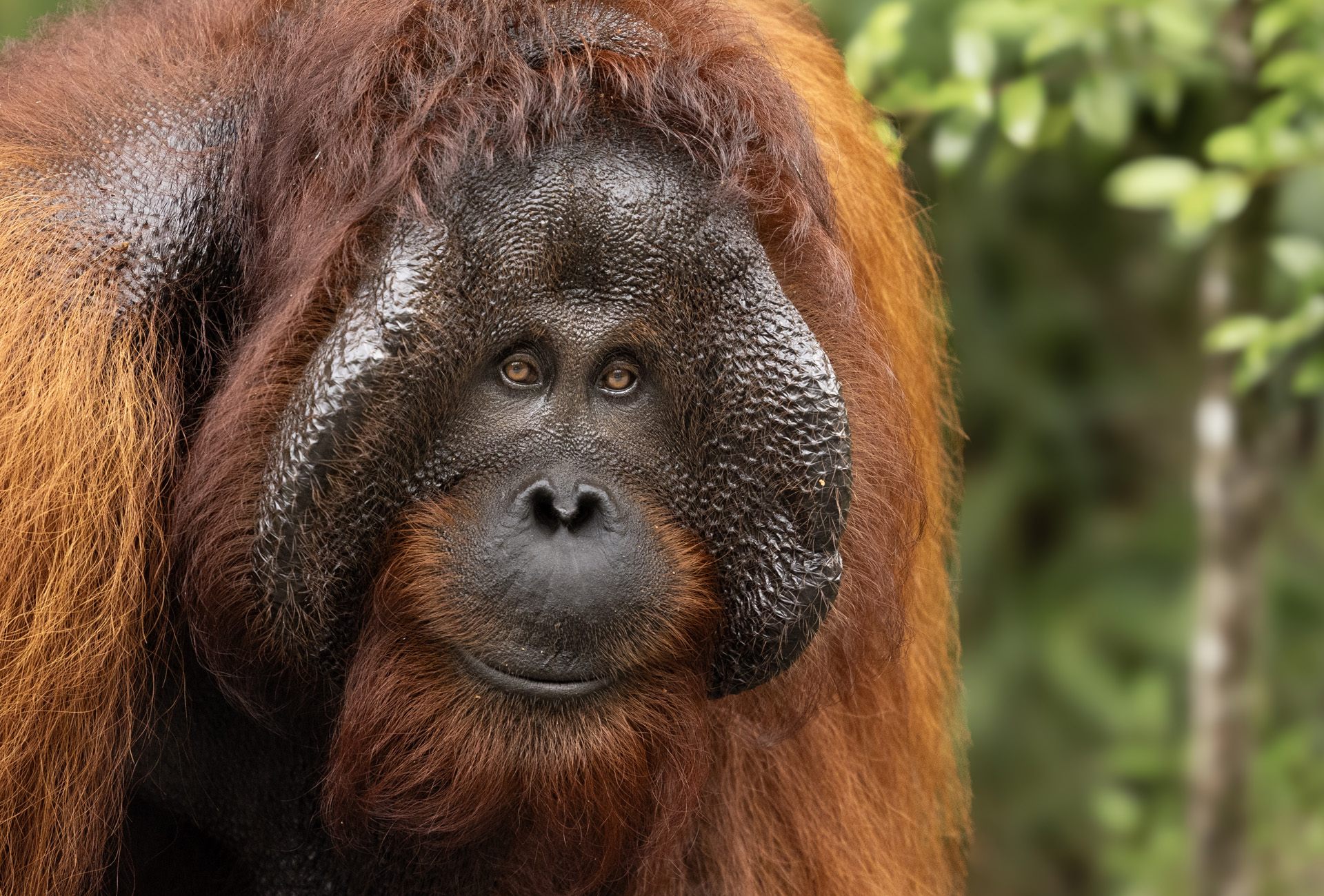
Nat Hab Expedition Leader © Court Whelan
Shot 2: Close-Up of Orangutans Feeding — Medium and Tight Shots
Orangutans are essential seed dispersers in the forest, and capturing this behavior is important for illustrating their ecological role. Zoom in to catch the detailed action of an orangutan eating, especially if it’s discarding seeds—a behavior that helps regenerate the rainforest.
Tight shots should show the texture of their fur, their dexterous hands and the fruits they’re consuming. These images emphasize their key role in the ecosystem, as orangutans help spread seeds throughout the forest floor, ensuring plant biodiversity.
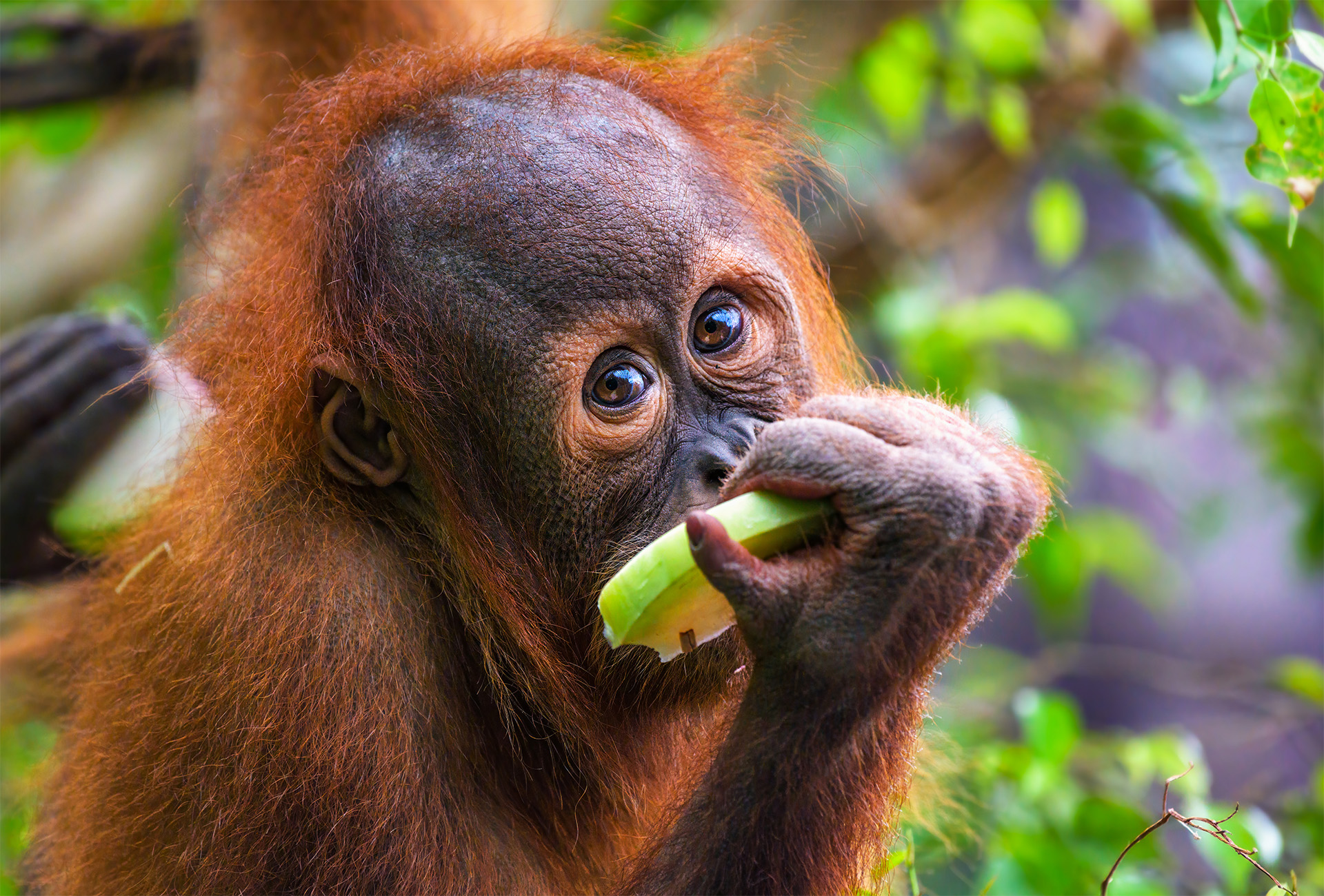
Location: Sepilok Orangutan Rehabilitation Centre, Danum Valley Conservation Area
Photo Goal: Use medium and tight zoom lenses to capture the intricacies of feeding behavior and the connection between orangutans and the fruits they consume. A focal length of 200–400mm is ideal for isolating the subject while maintaining enough distance to avoid disturbing them. Aim for a fast shutter speed to freeze motion while the orangutan is actively eating.
Conservation Connection: Reinforces the orangutan’s role as a keystone species in maintaining the health of the rainforest. Without orangutans, many plant species in Borneo would lose their primary means of seed dispersal, affecting the entire forest ecosystem.

Nat Hab Expedition Leader © Court Whelan
Shot 3: Unique Wildlife Along the Kinabatangan River — Proboscis Monkeys in the Trees
The Kinabatangan River is home to a wide array of wildlife, including the distinctive proboscis monkeys, which are endemic to Borneo. As you cruise along the river, look for opportunities to capture these monkeys high in the trees, their exaggerated noses adding character to the frame.
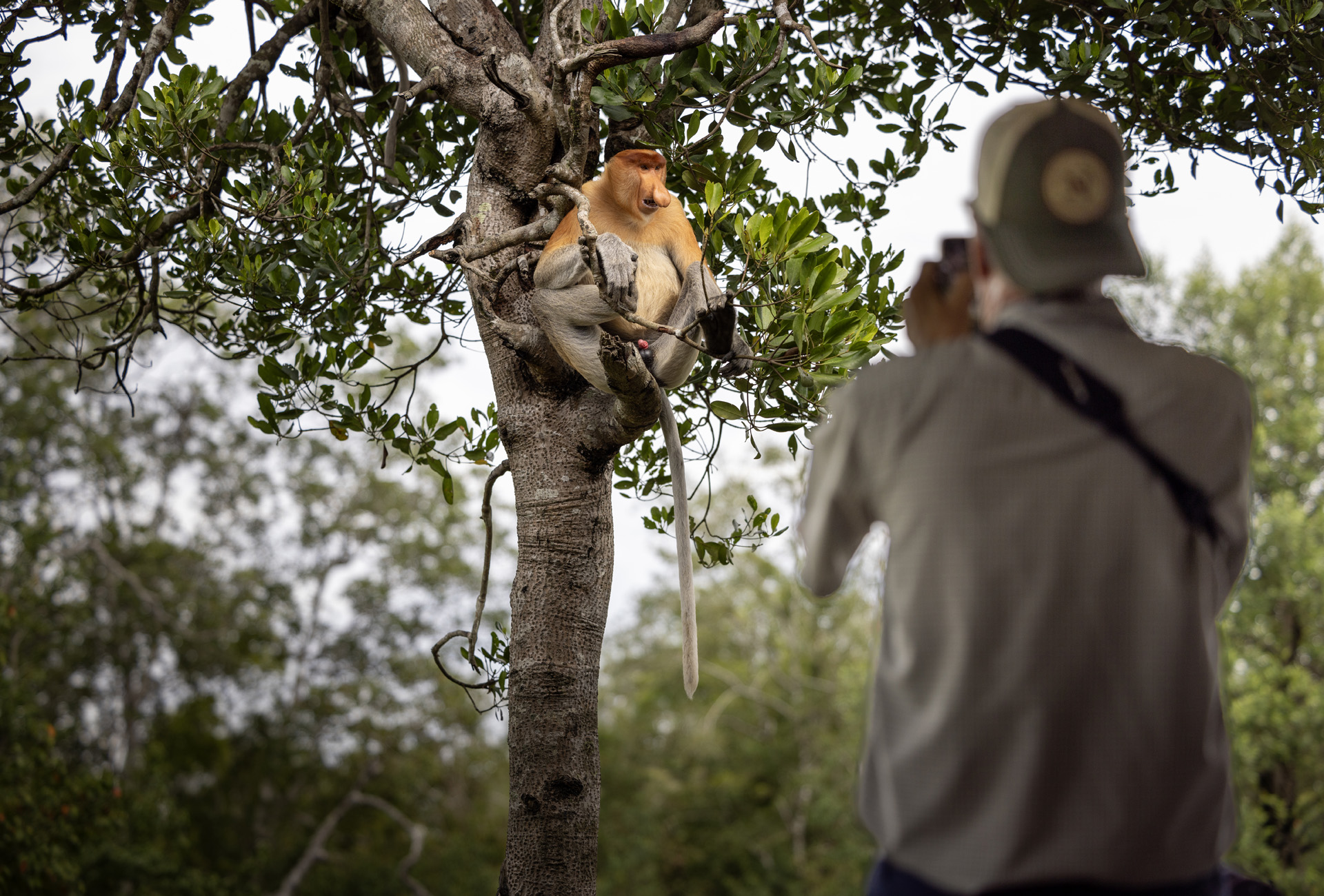
Nat Hab Expedition Leader © Court Whelan
Consider shooting at sunrise or sunset to bathe the scene in golden light, offering a warm contrast to the greenery of the rainforest.
Proboscis monkeys are often seen in large social groups, making for dynamic shots that show both the individual characteristics of the monkeys and their interactions within their troop. These shots can serve as an additional story element to complement your orangutan focus, showcasing Borneo’s overall biodiversity.
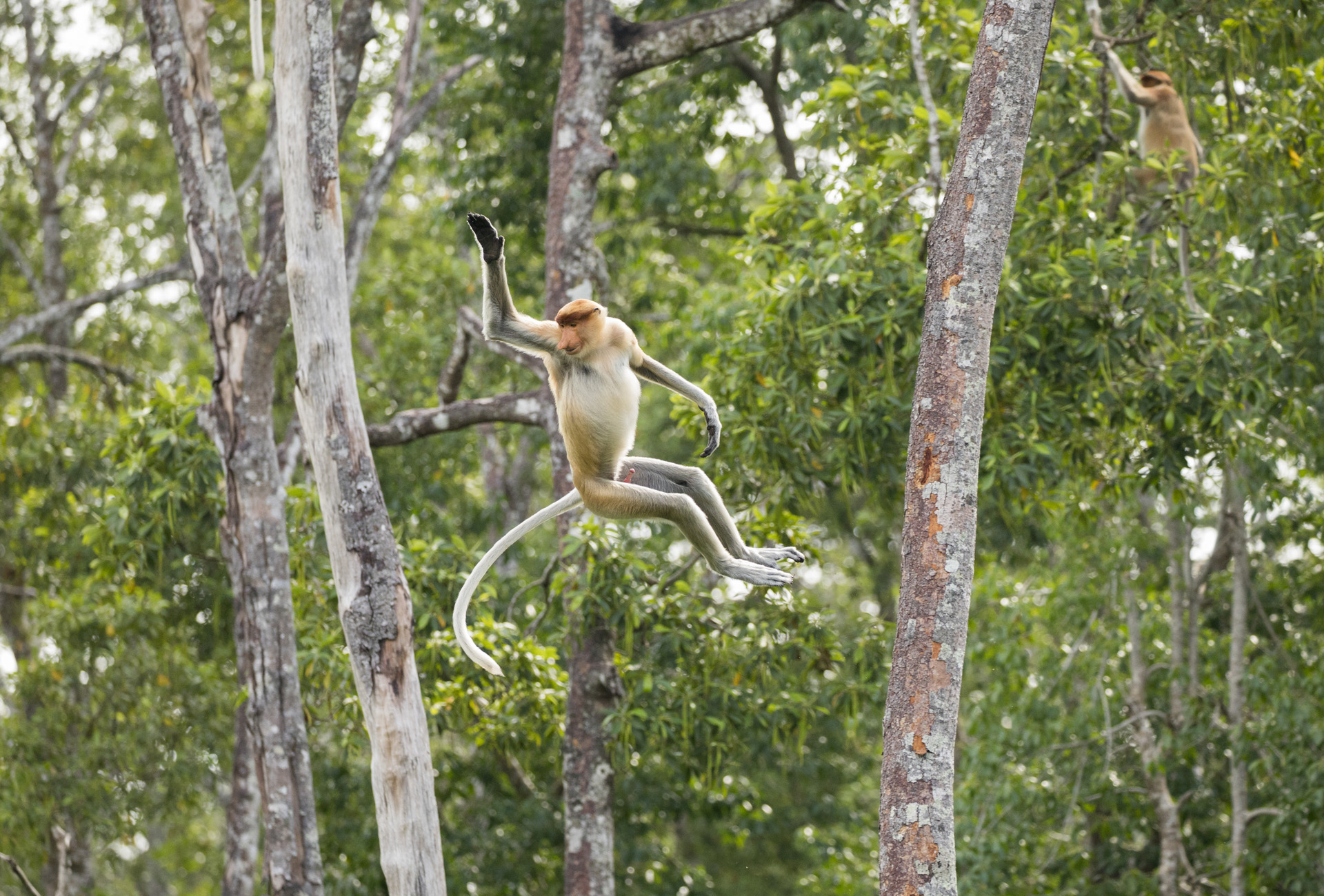
Nat Hab Expedition Leader © Court Whelan
Location: Kinabatangan River
Photo Goal: Capture the unique features of proboscis monkeys with a medium lens while showing them interacting in groups. To enhance color contrast, adjust your white balance for warm tones when shooting at golden hour. A lens in the 70–200mm range is perfect for capturing group dynamics and expressions while maintaining distance.
Conservation Connection: Highlight Borneo’s unique species and the importance of preserving the riverine ecosystems that support them. Proboscis monkeys rely on the health of these ecosystems, which are increasingly threatened by deforestation and palm oil plantations.
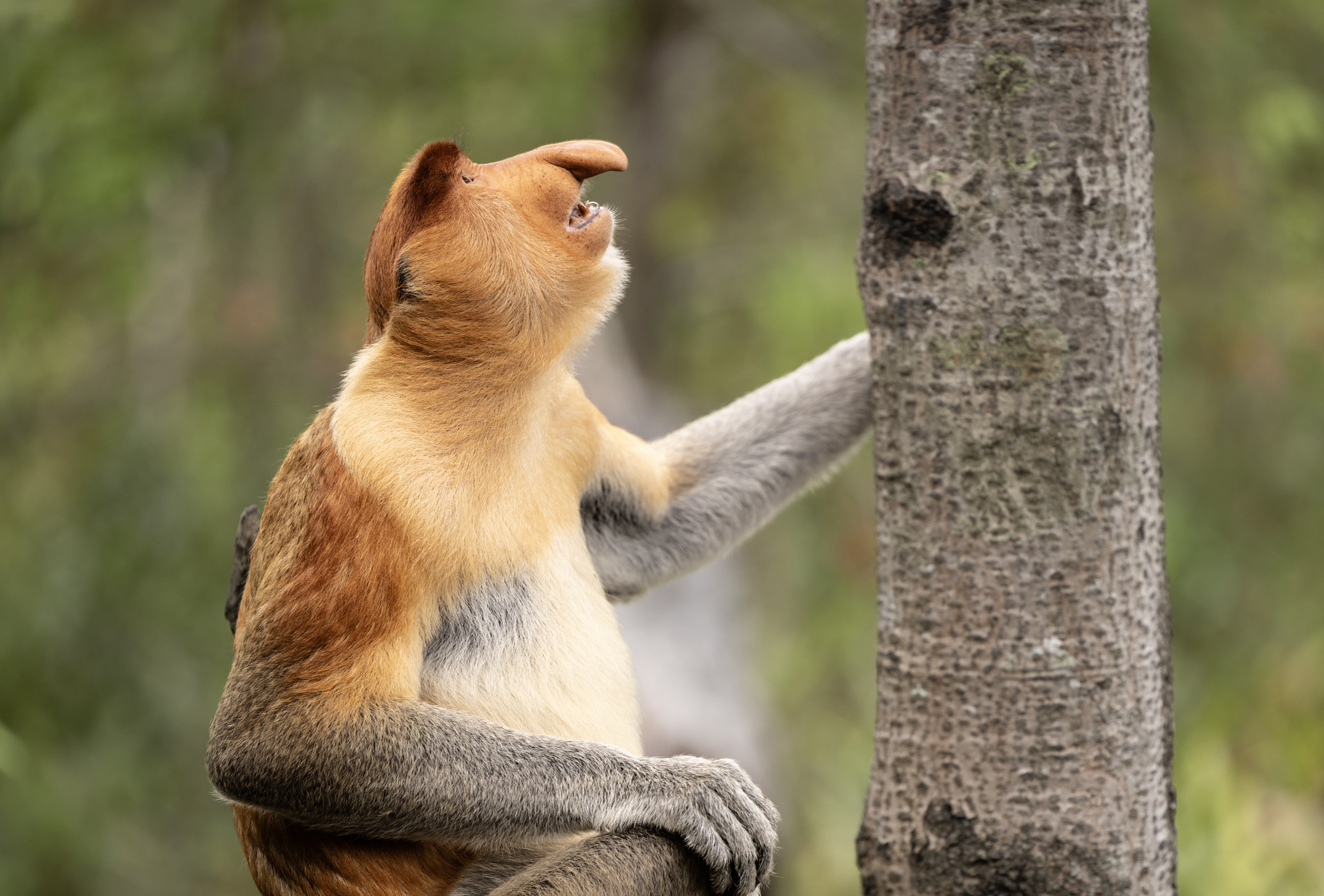
Nat Hab Expedition Leader © Court Whelan
Shot 4: Portrait of a Pygmy Elephant — Close-Up of an Endangered Species
Borneo is home to the endangered pygmy elephant, and getting a close-up portrait of this rare species can be a highlight of your trip. While cruising the Kinabatangan River or exploring the Danum Valley, keep your camera ready for encounters with these gentle giants. Portraits should focus on the elephant’s eyes, tusks and skin texture, creating an intimate connection between the viewer and this endangered species.
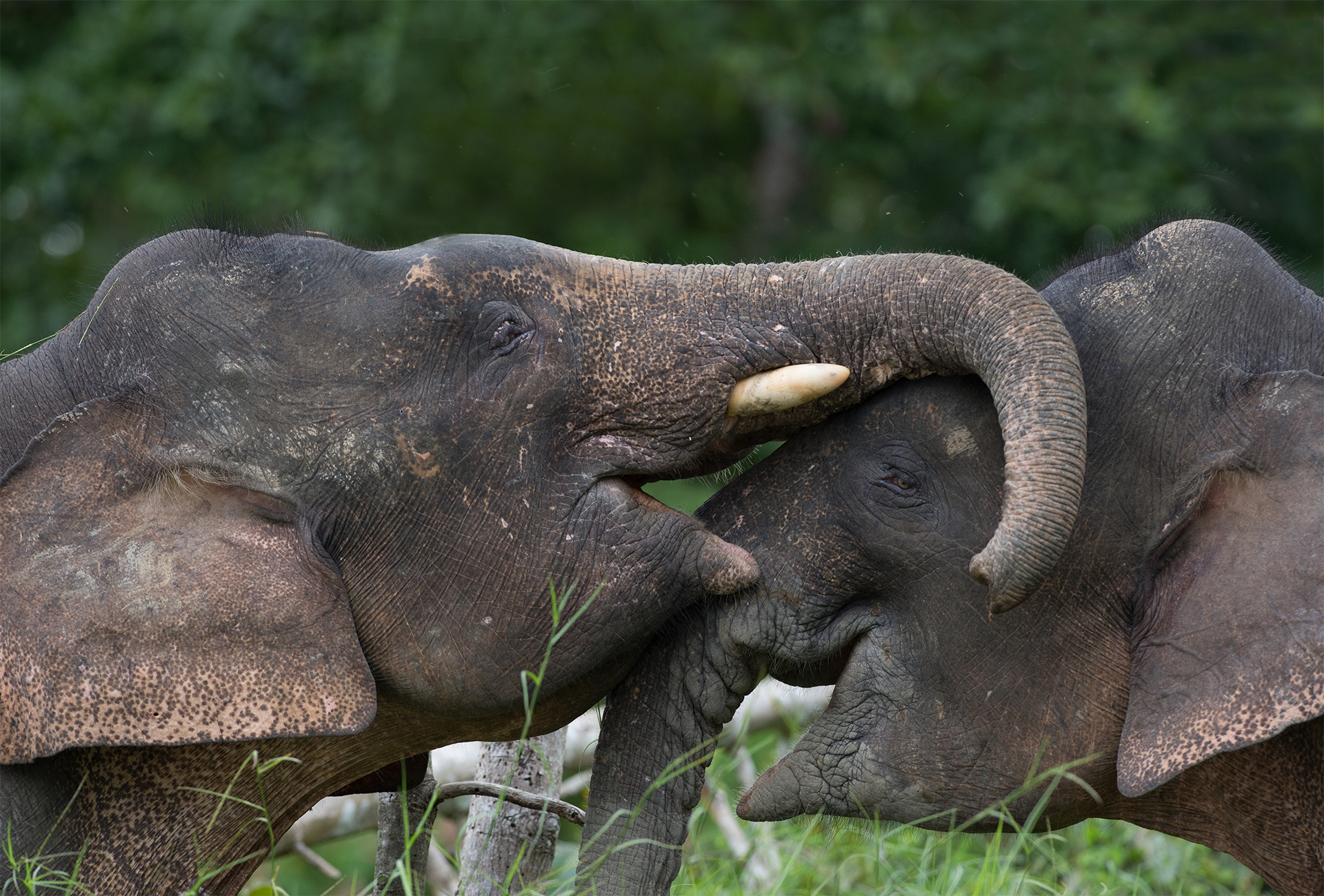
Capturing an image of a mother elephant with her calf can add another layer of emotional impact, showcasing the familial bonds within elephant groups. This also reinforces the conservation message, as pygmy elephants face significant threats from habitat loss and human-wildlife conflict.
Location: Kinabatangan River, Danum Valley Conservation Area
Photo Goal: Use a tight zoom lens to capture an intimate portrait, focusing on the texture and details of the elephant. Set your aperture to around f/4 to create a shallow depth of field, ensuring the elephant’s face is sharp while the background is softly blurred. This isolates the subject and adds emotional impact.
Conservation Connection: Raises awareness of the plight of Borneo’s pygmy elephants and their fight against habitat encroachment. Pygmy elephants are classified as endangered, with fewer than 1,500 left in the wild.
(function(d,u,ac){var s=d.createElement(‘script’);s.type=’text/javascript’;s.src=’https://a.omappapi.com/app/js/api.min.js’;s.async=true;s.dataset.user=u;s.dataset.campaign=ac;d.getElementsByTagName(‘head’)[0].appendChild(s);})(document,123366,’h9obwq6k3qvqqdt4lbhu’);
Shot 5: Rainforest Flora and Local Fruits — Wide and Close-Up Shots
The tropical plants and flowers of Borneo’s rainforests are vibrant and diverse, making them ideal subjects for wide shots of the forest floor or close-ups of individual plants. Focus on capturing the colorful and intricate details of rainforest flowers, such as orchids, which are plentiful in the Danum Valley. These flowers play a crucial role in the ecosystem and are often overlooked in wildlife photography.
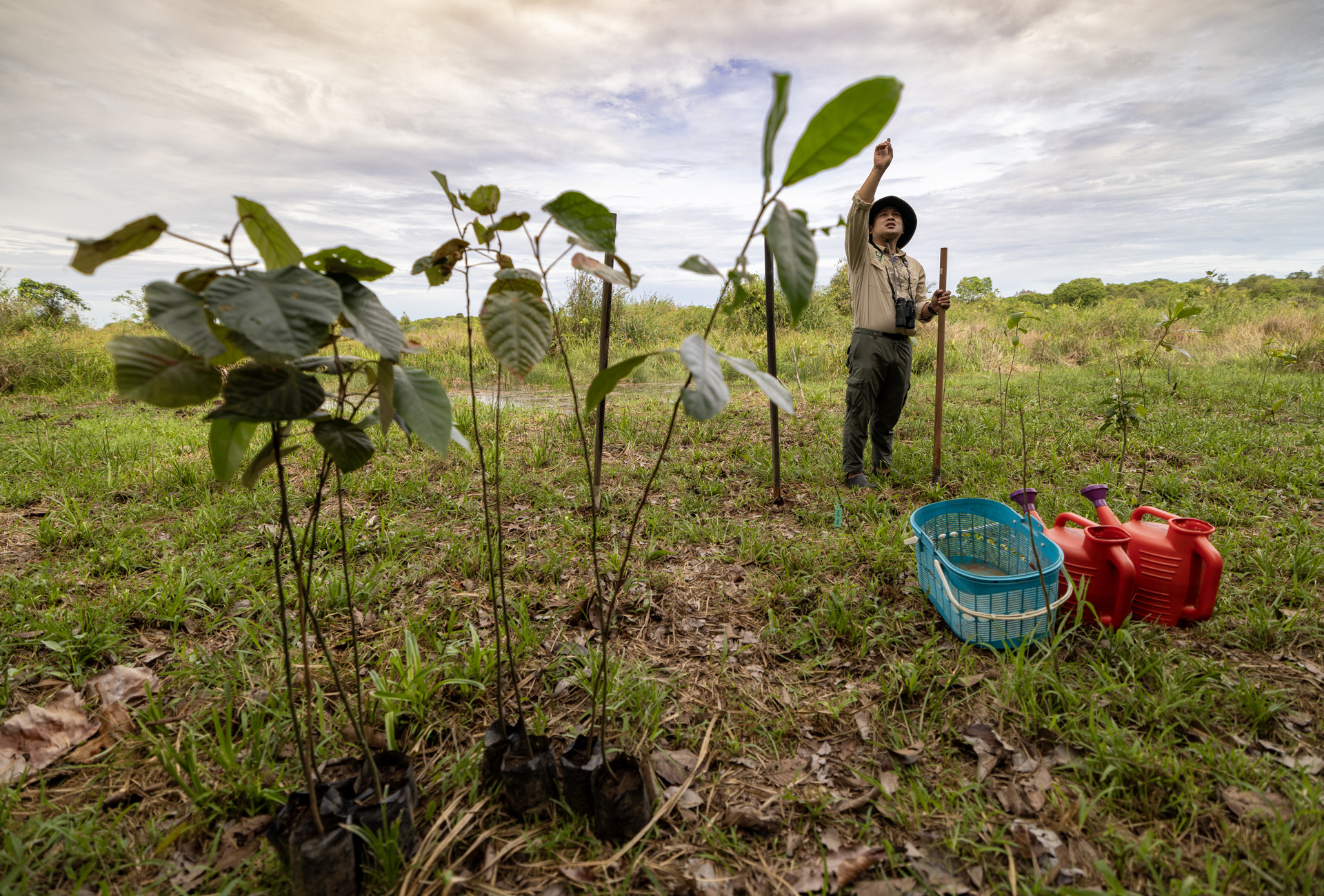
Nat Hab Expedition Leader demonstrates sustainable agriculture. Photographed by © Court Whelan
In addition to wild plants, local fruits found in Borneo’s markets offer a human connection to the rainforest. Capturing the fruits—such as durian, mangosteen or rambutan—can illustrate the connection between the forest and the livelihoods of local communities. Adding a human element, such as a market vendor or a person eating fruit, broadens the narrative and ties human life to the rainforest.
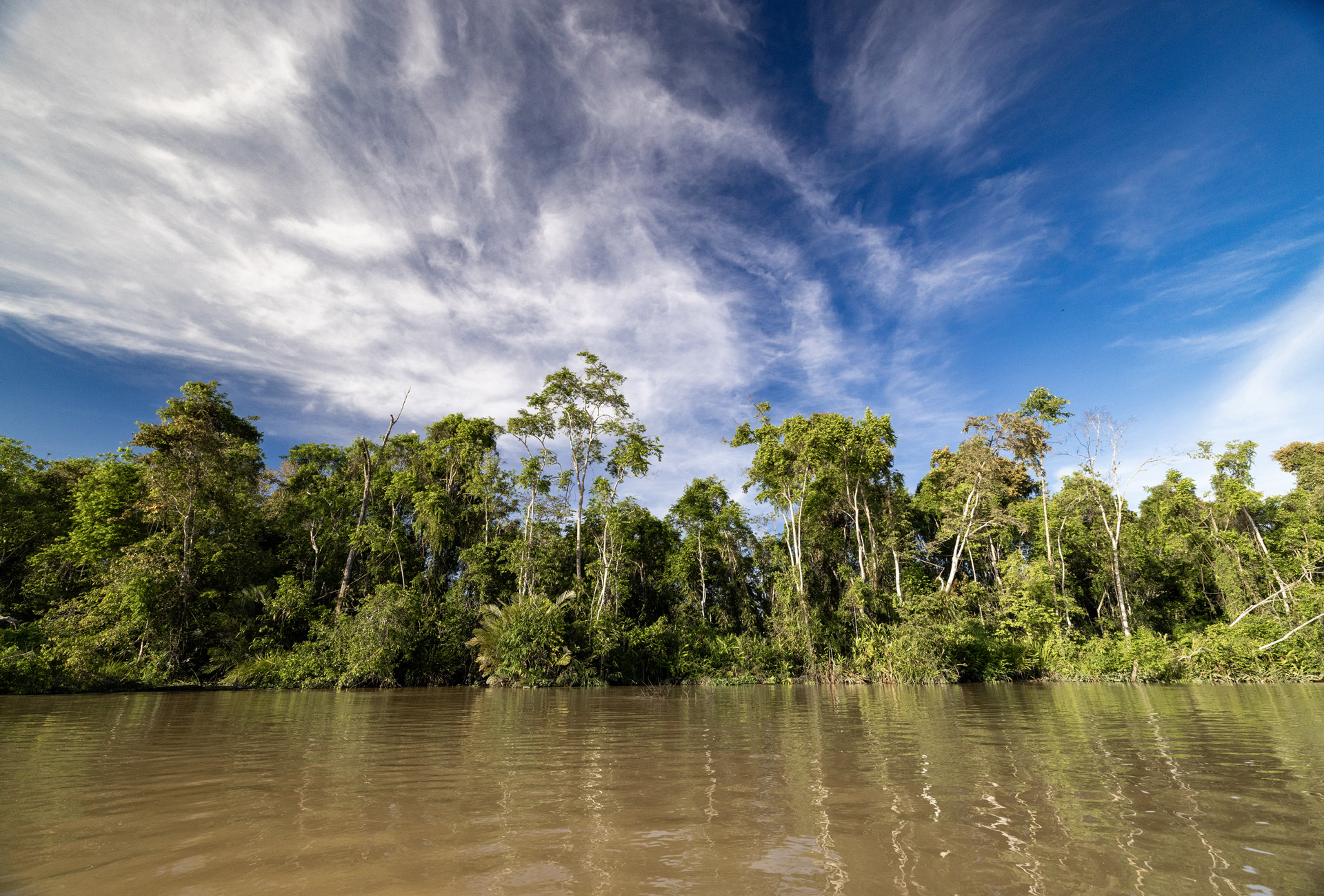
Nat Hab Expedition Leader © Court Whelan
Location: Danum Valley, Local Markets in Sandakan
Photo Goal: Capture both wild rainforest plants and fruits in local markets, focusing on texture and color. Incorporate humans where possible. A macro lens can be helpful to get close-up details of the intricate textures of flowers and fruits.
Conservation Connection: Demonstrates how humans rely on the forest for food and how the health of the rainforest supports local economies. Many fruits sold in local markets are directly linked to rainforest biodiversity.
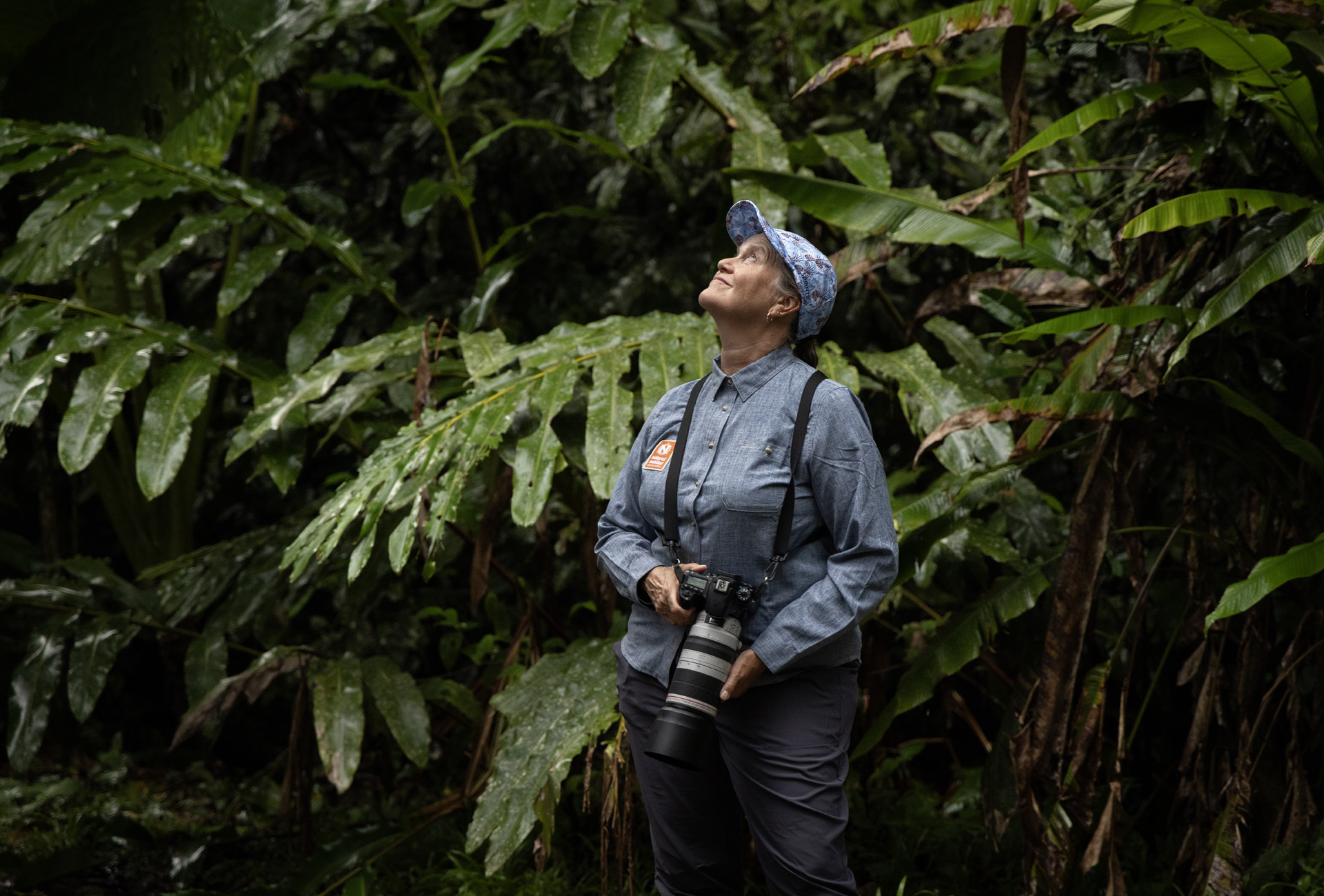
Nat Hab guest looks up to the canopy. Photographed by Expedition Leader © Court Whelan
Shot 6: Orangutans and Their Offspring — Emotional Connection with Tight Portraits
Photographing orangutans with their offspring provides not only a heartwarming image but also a powerful message about the importance of protecting these vulnerable animals. In the wild, mother orangutans stay with their young for up to eight years, teaching them essential survival skills.
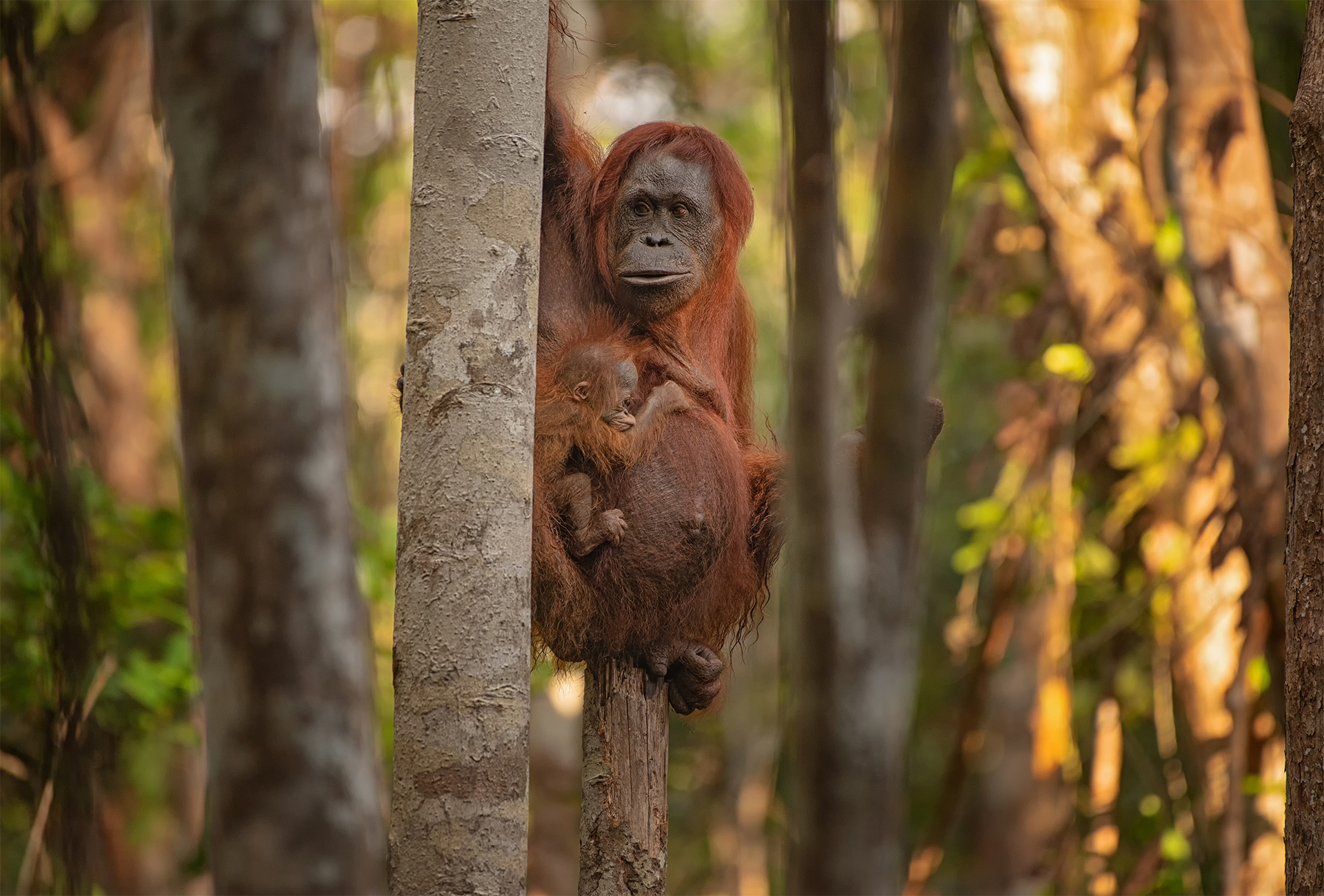
Capturing this bond with close-up shots of mother and child will resonate with viewers, fostering a connection that can motivate action toward conservation efforts.
Location: Sepilok Orangutan Rehabilitation Centre, Kinabatangan River
Photo Goal: Use a tight zoom lens to focus on the emotional bond between orangutan mothers and their young. A focal length of 300mm or higher will allow you to capture intimate expressions while maintaining distance. Consider shooting in soft light to emphasize the gentle interaction between mother and child.
Conservation Connection: Highlights the vulnerability of young orangutans and the necessity of protecting their habitat for future generations. Orangutans are critically endangered, with their population decreasing due to illegal logging, palm oil plantations and hunting.
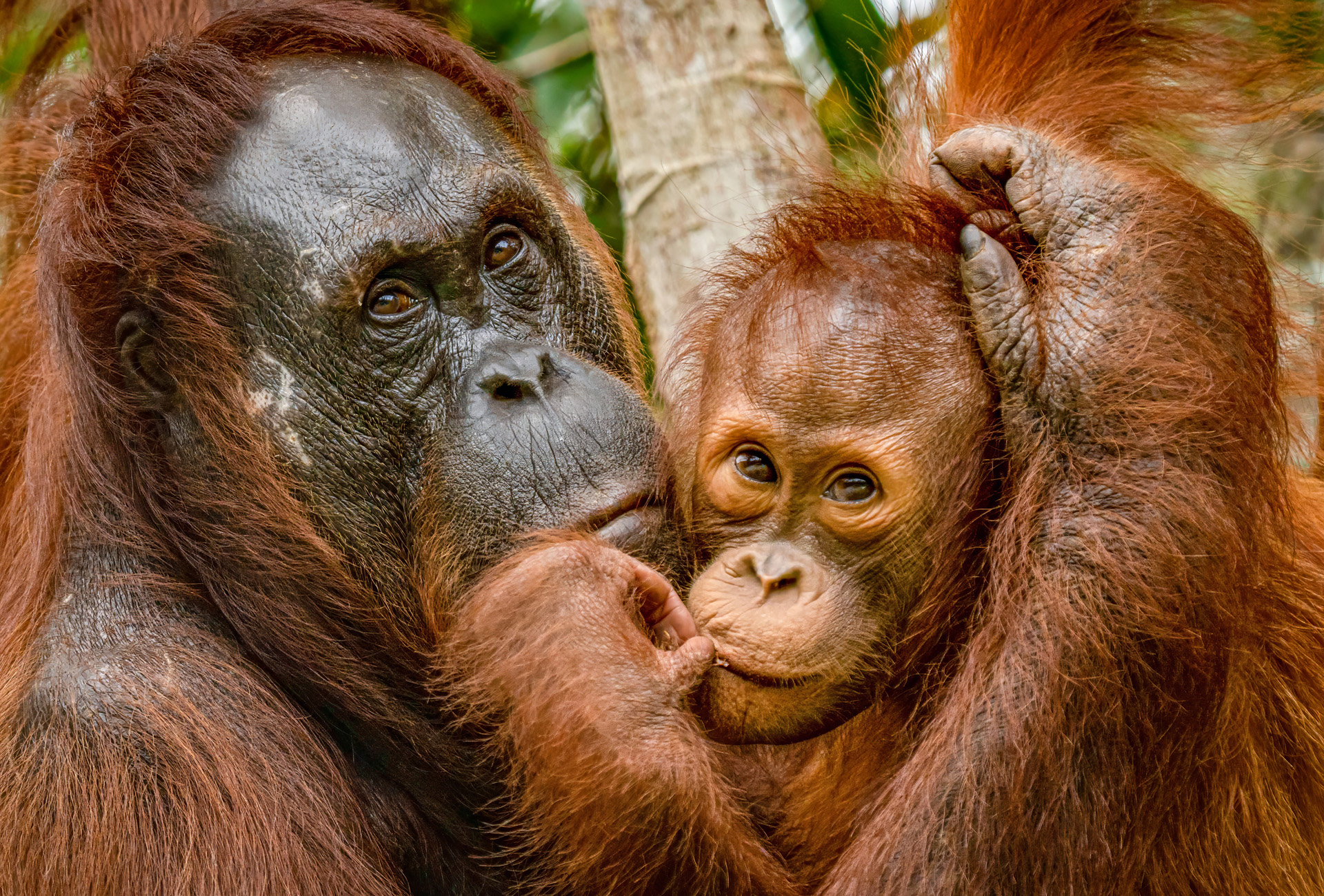
© Brad Josephs
Crafting a Conservation Narrative
Creating a shot list that encompasses a wide range of wildlife, flora and human elements allows you to capture and share a compelling conservation story during a Borneo Wildlife Photo Expedition. Whether you focus on orangutans as keystone species or explore the interconnection between wildlife and local communities, each shot can play a role in educating and inspiring conservation action.
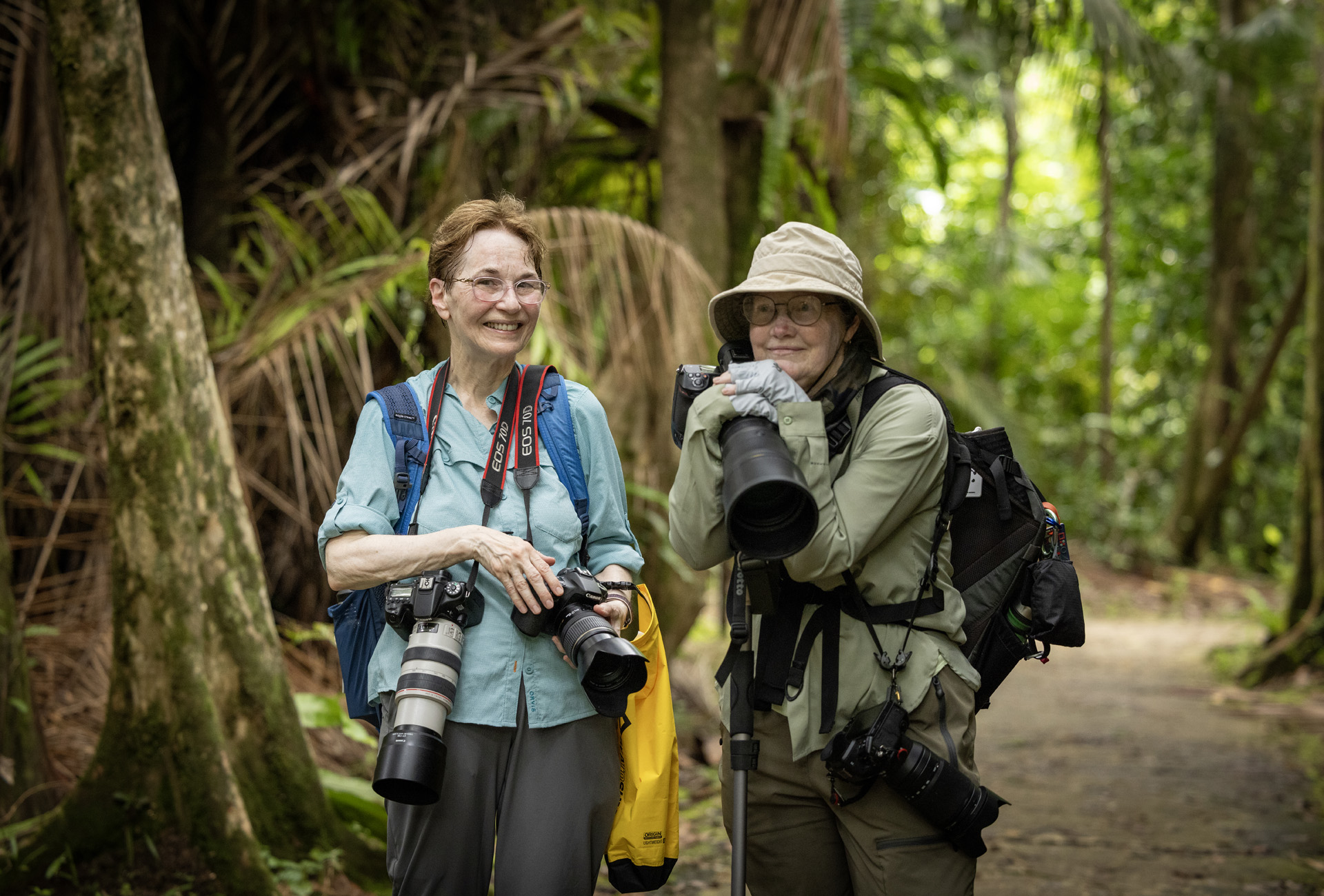
Nat Hab guests. Photographed by Expedition Leader © Court Whelan
Want to get started in conservation photography? Nat Hab Expedition Leader and Chief Sustainability Officer, Court Whelan emphasizes,
“To me, the key to success is aiming for simple stories that you connect with. Could you create a photo essay on the importance of orangutans to the ecosystem? This is absolutely conservation-focused and accomplishes the goal of educating and motivating action on a species you’re likely to see.”
With this shot list and a deeper understanding of Borneo’s wildlife, landscapes and conservation challenges, you’ll be ready to capture powerful photos that showcase Borneo’s beauty and inspire others to protect it, too.
Want to Know More About Borneo and Travel There?
Whether you’re preparing for your upcoming Borneo adventure or just want to learn more about this lush island, Nat Hab has you covered. Check out our Know Before You Go page for an array of helpful resources, from wildlife and weather guides to firsthand accounts written by Nat Hab travelers and staff. You’ll especially want to check out the orangutan photo tips!
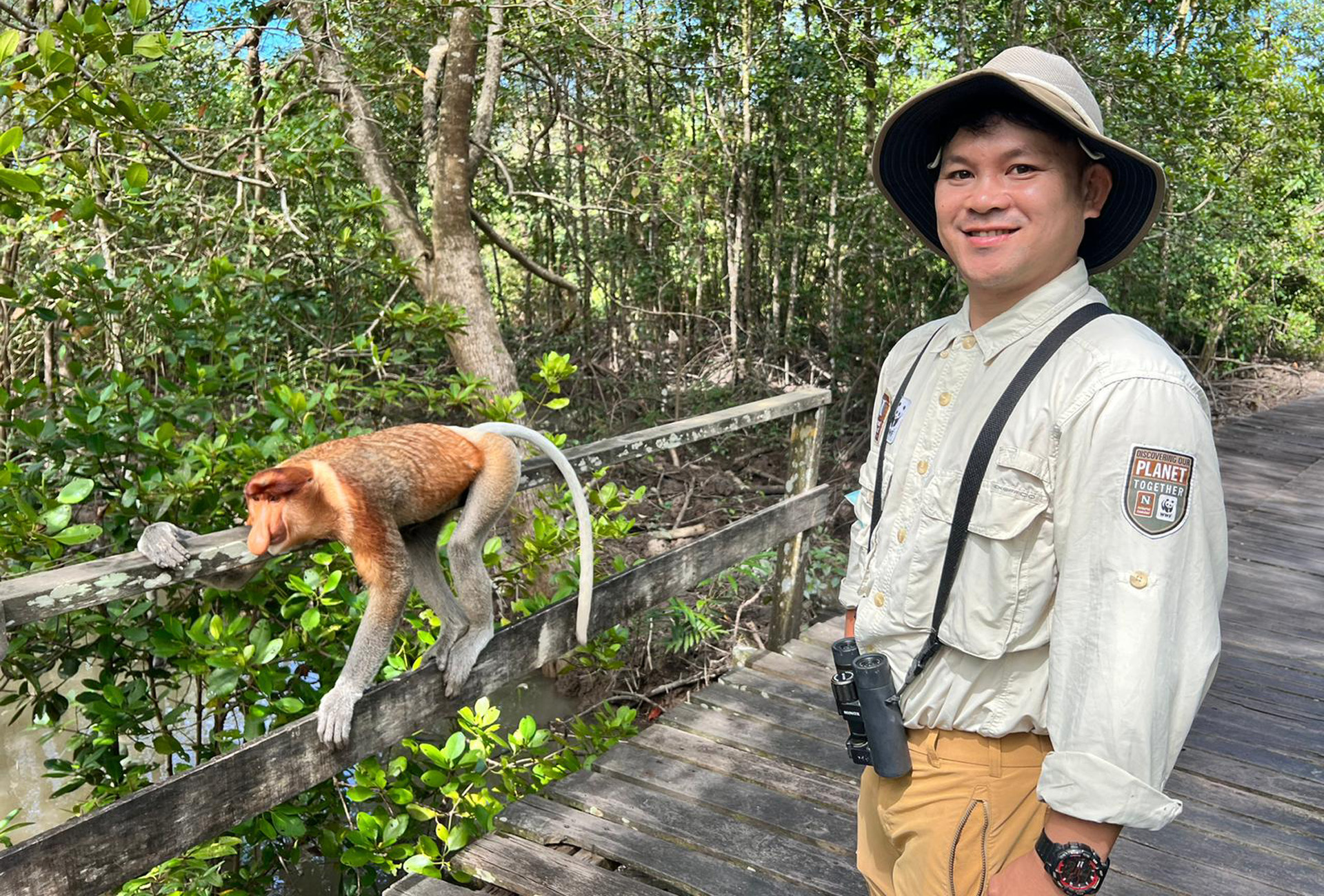
Nat Hab Expedition Leader beside a proboscis monkey. Photographed by guide © Bedley Asun
The post Wildlife Photography in Borneo: 6 Shots That Tell a Conservation Story first appeared on Good Nature Travel Blog.
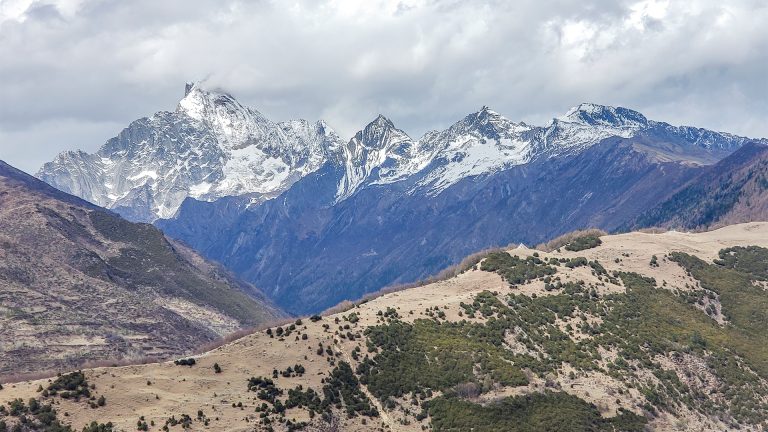
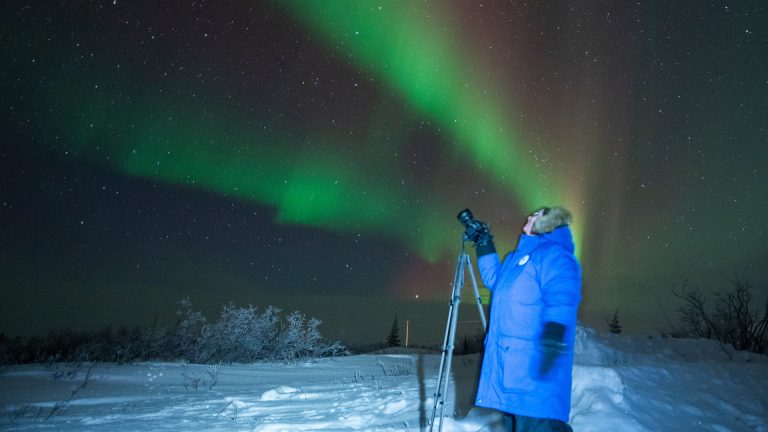





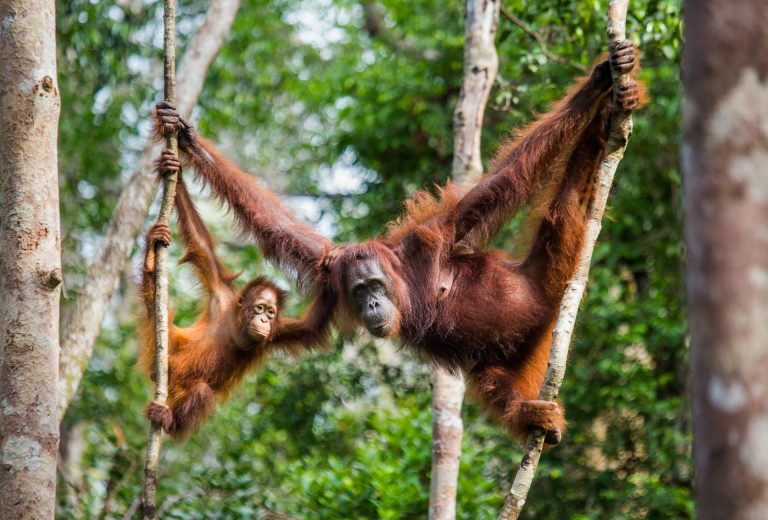

+ There are no comments
Add yours